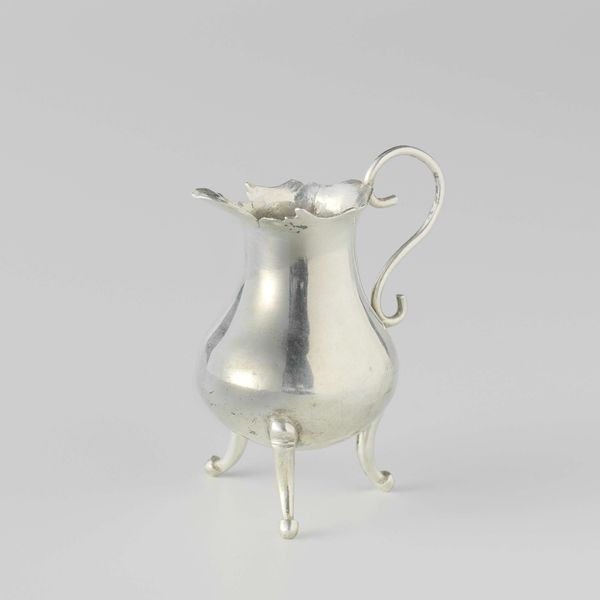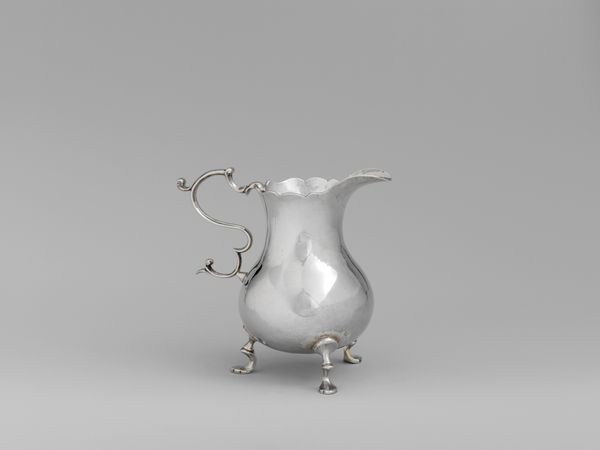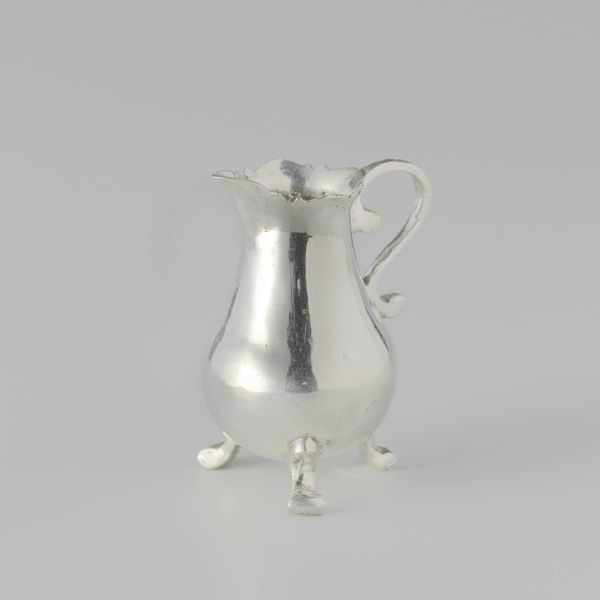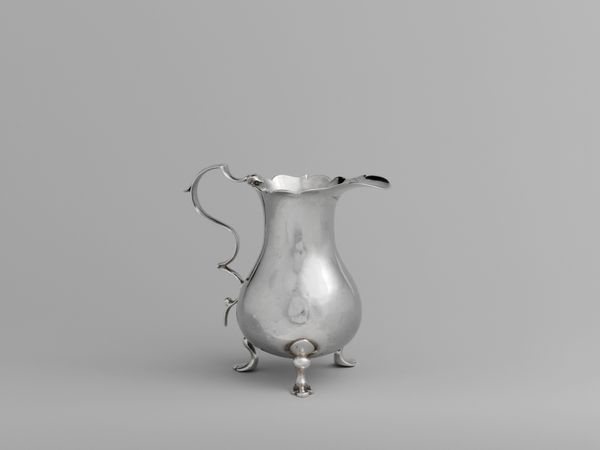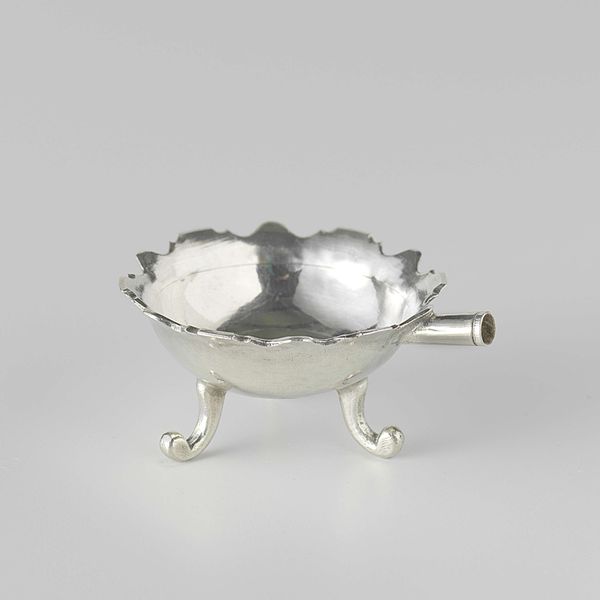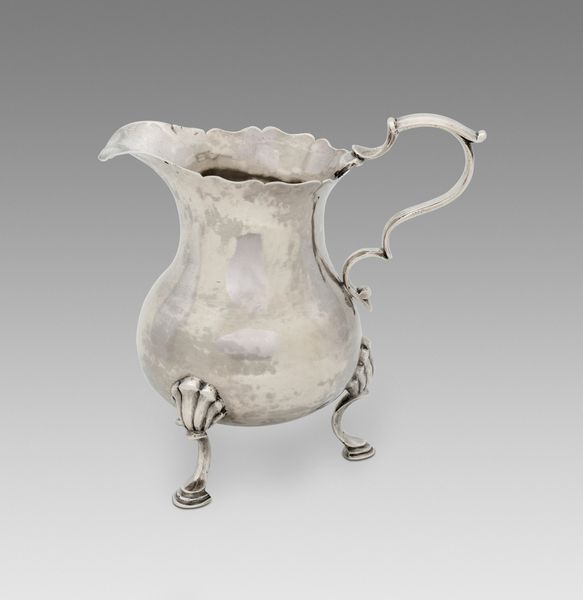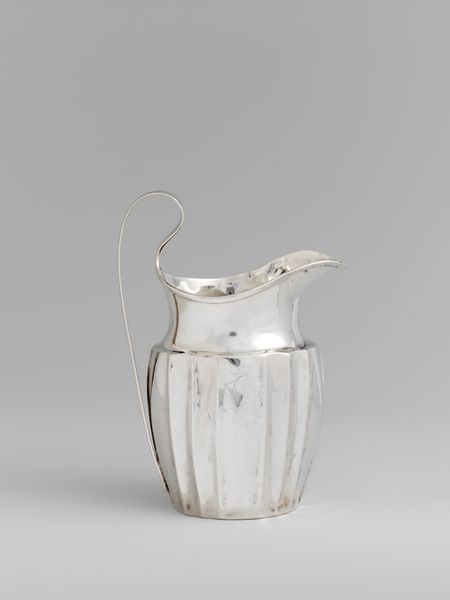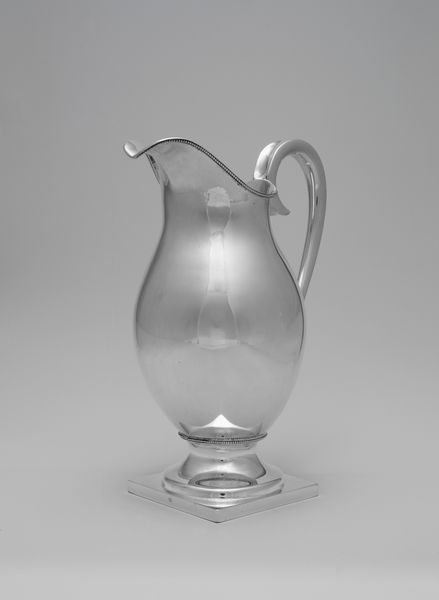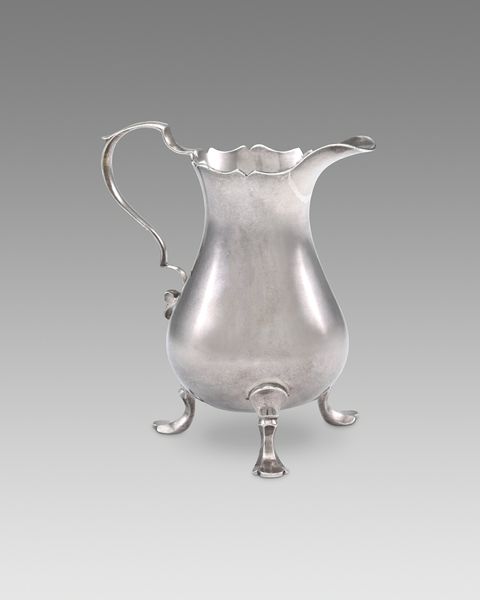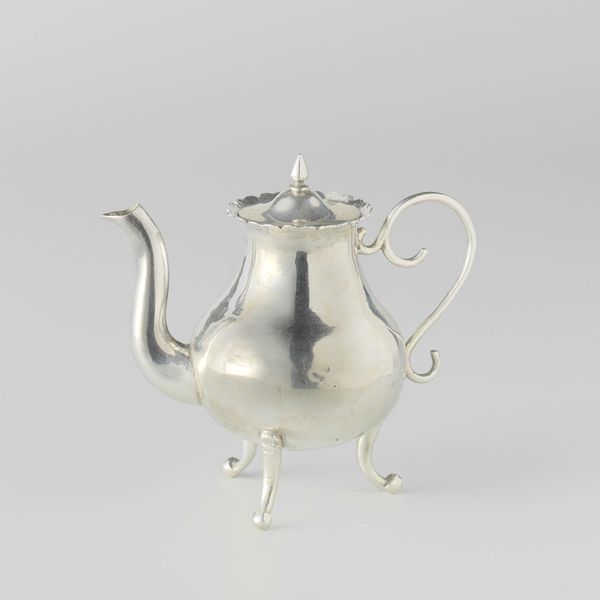
Copyright: Rijks Museum: Open Domain
Curator: Let's turn our attention to this delightful milk jug, or "Melkkan," crafted by Frederik Sleuman in 1772. It's silver, exhibiting that distinctive Rococo flair. Editor: My first impression? Utterly whimsical. The scalloped edge and delicate legs make it seem almost animated, poised for a tiny tea party. Curator: Precisely. The material here, silver, signals status and the intricate details reflect a specialized labor and the consumption habits of the elite. Sleuman’s craft represents a mastery achieved through rigorous apprenticeship, situating him within the guild system. Editor: Absolutely. It also tells a story about access and privilege during that time. Who were the people commissioning such delicate pieces? What roles did enslaved laborers, extracted resources and class structures play in Sleuman's workshop and patronage networks? We need to interrogate the systems that enable this kind of artistry. Curator: Good points. Note, also, how the curves and asymmetry of the handle play with light and shadow. The silver is not merely ornamental. It speaks to specific techniques of silversmithing practiced at the time. How does the Rococo style differ materially from the heavier Baroque that came before, in terms of silver usage, construction? Editor: And considering its original use as a milk jug – itself connected to colonialism's impact on agricultural practices and dietary shifts – it reminds us that everyday objects carried profound socio-political weight, often shaping cultural norms. It connects to patterns of domesticity but it's important to trace back to the points of extraction. Curator: Milk, typically associated with the domestic realm, is here elevated by way of artful objecthood and design. Think too about trade routes that delivered materials. Also about techniques, like chasing and repoussé work visible here and essential for understanding skill involved. Editor: Understanding silver's inherent value lets us consider broader historical trade networks as well. Let’s continue expanding art histories to be truly intersectional and reflect overlooked producers as much as affluent consumers of objects like this "Melkkan." Curator: It becomes quite apparent how an artwork—or object like this “Melkkan”— opens so many portals for conversation around culture and the means through which it comes to be. Editor: Definitely. It challenges the very notion of passive observation of art— prompting action by inspiring continued questions.
Comments
No comments
Be the first to comment and join the conversation on the ultimate creative platform.
